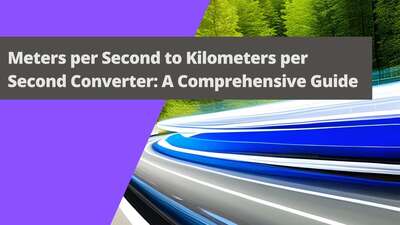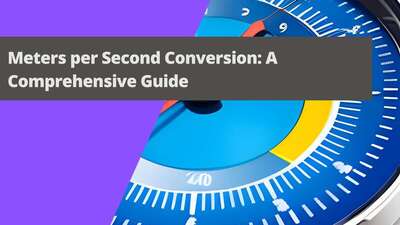Metric conversion
The metric conversion is one of the most popular kinds of conversions. Why? Because the metric system is used in so many places in the world. To be honest, this system is much more popular than the US customary units system for example. What is a metric system? Where is it used? Which units are a part of it? How to make the metric conversion? The answers to all these questions (and many more) you will find in this article, so keep reading.
First things first. In this part of the article we want to focus on the metric system. We are going to explain to you all basic information about it. Then we will move on to the main topic of this article, that is to the metric conversion. We will show you how you can make it in two different ways. So let’s start.
What is the metric system exactly? The metric system is known nowadays also as the International System of Units (in abbreviation SI). It is said that the International System of Units is a modern form of the metric system. And it is true. The metric system has changed over the years. In this article we want to focus on a current form of it only. So what is the definition of the metric system?
The metric system is a system of measurement. Curiously, it is used almost all around the world as an official system of measurement. For instance, the metric system is used in the whole continental Europe as a basic one. Do you know that even in most of Africa countries the metric system is also used? The main exception to the rule is the United States. This country has never adopted the SI system and still uses its own system – the aforementioned US customary units system.
The metric system consists of 7 base units. Here they are:
- second – used to measure time,
- metre – used to measure length,
- kilogram – used to measure weight,
- ampere – used to measure electric current,
- kelvin – used to measure thermodynamic temperature,
- mole – used to measure the amount of substance,
- candela – used to measure luminous intensity.
The three units which are commonly converted when it comes to the metric system are second, meter and kilogram. It is caused by the fact that these three units are the most commonly used in everyday life.
It is also needed to say that in the metric system, beside these 7 base units, are also SI derived units. They are created with the use of the SI prefixes, such as milli, deca or mega. These prefixes are used to express smaller or bigger values than in the base units. For example, there is the base unit meter and centimeter, which is equal to 0.01 meters.
And the last thing we want to add – as you could see in the example below, the metric system is based on the decimals. It will be explained better in the next, more practical part of this article.
We think this information is sufficient to move on to the metric conversion in practice. As you can see, the metric system is quite complex. For some people it can be problematic to make the metric conversion, especially for those who do not use this system normally. But don’t worry. We are going to show you two ways to make it easily and quickly.
Metric conversion – make it on your own
The metric conversion you can make on your own. It is quite easy, because the whole process is based on moving the comma to the left or to the right. To make it properly, you need to know the decimal value of the SI prefixes. We are going to show you it in the examples. We are sure that after it you will know how to make the metric conversion on your own.
Here we will give you two SI prefixes and their decimal values. We will use them in our examples. Have a look:
- centi – 0.01,
- deca – 10.
Now try to convert 2 meters to centimeters. The meter has no prefix, so you just need to check the value of the ‘centi’ prefix. It is 0.01. So you need to move the comma two places to the left. The result is: 2 meters is equal to 0.02 centimeters.
And now calculate 5 kilograms to decagrams. The kilogram has the SI prefix ‘kilo’. The value of this prefix is 1000. To know how many places to the right you need to move the comma, you have to divide 1000 (value of the SI prefix ‘kilo’) by 10 (value of SI the prefix ‘deca’). It gives 100. So you need to move the comma two places to the right. The result is: 5 kilograms is equal to 500 decagrams.
It is quite easy, right? If you have some problems with it, don’t worry, practice makes perfect. Do you not want to wait? Do you want to make the metric conversion totally effortless? Check the next part of this article.
Metric conversion – use the metric converter
To make the metric conversion effortless you need just one tool – the metric converter. What is it? The metric converter is kind of a calculator, but web based. It contains all units from the metric system with formulas. So… You do not need to remember formulas and do your own calculations. You just need to do only 3 simple things. Here they are:
- Enter the number which you need to calculate.
- Pick the unit in which you have this number.
- Pick the unit in which you want to get your result.
3 steps, nothing more. And then you will get your result. The result calculated by the metric converter in less than a second. Could it be simpler?
Do you need to make the metric conversion? Try out our metric converter and do it without any effort, stress or mistakes. In just a few seconds. For free.









